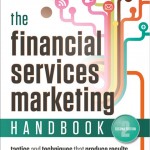Financial call transcripts: Are they good for marketing?
In my last staff job for an investment manager, I ran a weekly conference call with portfolio managers and other investment experts. Relationship managers and other portfolio managers dialed in to hear our experts’ views on the market and specific asset classes. My experience with those calls prejudiced me against using financial call transcripts for marketing. I’ll you why. But I’ll also share tips for getting more out of transcripts, if you use them.
My experience with a fixed-income call transcript
I remember a relationship manager asking me to order a call transcript to share with his colleagues and, possibly, some clients. I said “no.” Anyway, a few days later, I was surprised to receive a transcript in my email inbox. How did that happen? The relationship manager went behind my back to order a transcript. The company sent me a copy because I managed the call.
The relationship manager got his transcript. However, he didn’t really get what he wanted. After reading the transcript, he realized that it wasn’t useful. Even with editing, the transcript wouldn’t be compelling.
With that introduction, I’ll explain why financial call transcripts often aren’t good for your marketing.
3 reasons financial call transcripts may not work
Reason #1: Calls may not be as meaty as written documents
A spontaneous, unplanned call may bounce around and fail to go into depth on any one topic. This may work for some audiences, especially if audience members feels they are getting special access to normally inaccessible experts.
However, this type of call may not translate well into a transcript. It may be difficult for readers to glean useful information.
For example, imagine that your expert sprinkles tips about emerging-market stocks, investment-grade bonds, and tax planning advice throughout a call. Your expert’s wanderings are likely to irritate your transcript’s readers.
Your transcript readers are also likely to be turned off if your expert fails to fully develop any topics. A transcript full of one-liners gets boring. that’s true even if your speaker is a top comedian. Most financial professionals don’t have comedians’ gift of gab.
Reason #2: A conversational style may not translate into writing
You can ask your transcriptionist to delete ums, ahs, and other meaningless fillers. That’ll make your transcript more readable.
However, there are other practices that work well in conversation, but poorly in writing. A conversational style tends to use more words than a good written document. For example, when speaking, a person may say “I’m going to talk about this and then that.” In contrast, a document may go directly to “This and that are important because…”
I believe that most written communications in the financial world benefit from passing my first-sentence test. However, a discussion that passes this test might sound stilted and unnatural.
Reason #3: Typos abound
Many factors can prevent an accurate transcript:
- Speakers may not enunciate clearly.
- The technical quality of the recording may be poor.
- The transcriptionist may be sloppy or not know your industry. For example, I read a transcript that included the term “coverts,” as if it were referring to espionage. In fact, it should have said “converts,” a short form of “convertible bonds.”
3 ways to get more mileage out of recorded calls
1. Create speaking notes for your speakers
Provide some structure for your speakers before they get on your call. This will give your call more structure than a freewheeling conversation.
Here are two techniques to consider:
- Use a Q&A format. Draft questions that your moderator will ask on the call. It’ll help if the questions build in a logical order. Of course, a good moderator doesn’t stick 100% to the predetermined questions. It’s good to respond to the answers your experts give. Consider giving the questions to your expert in advance. It’ll help tongue-tied guests like me. On the other hand, some speakers may over-script and over-rehearse their answers. When you know your experts, you can manage them in the best way.
- Use speaking notes. I don’t recommend writing a word-by-word script. Detailed scripts tend to sap your speakers’ energy. Your speaking notes could be a list of topics, or the notes could go into more detail. Sometimes it’s good to provide bullet points for powerful statistics or stories. Stories tend to stick in people’s minds long after the facts disappear.
2. Proofread, copyedit, or rewrite transcripts
At a minimum, someone who listened to your call and someone who knows English usage rules should proofread your transcript. This will help you to avoid embarrassing mistakes.
Do you want to go beyond proofreading? There’s a spectrum from simple copyediting to rewriting the content to make it flow better.
3. Add headings
A transcript typically presents pages of text broken up only by the start of new paragraphs. When you add headings, you add visual variety. You also make it for readers to skim the document. They can figure out if the transcript touches on a big topic that interests them.
4. Create a highlights document
Back when I managed the weekly investment call for my employer, we didn’t use transcripts. Instead, I created a document that shared the highlights of the call.
Since my document was for internal use only, I wrote the highlights as bullet points. That meant it didn’t take as much time as writing in full sentences in a document that would pass my first-sentence check.
Bonus tip for working with a transcriptionist
Consider giving your transcriptionist a list of the technical terms that appear in your transcript. That may avert some mistakes.
YOUR tips?
Do YOU have tips to help marketers get more out of financial call transcripts? Please let me know.




